Harvesting tobacco for medicinal use
This post was written in dual language, so you will find a text completely in English, followed by one completely written in Spanish.
Este post fue escrito en doble lenguaje, por lo que encontraras un texto completamente en ingles, seguido de uno completamente escrito en español.

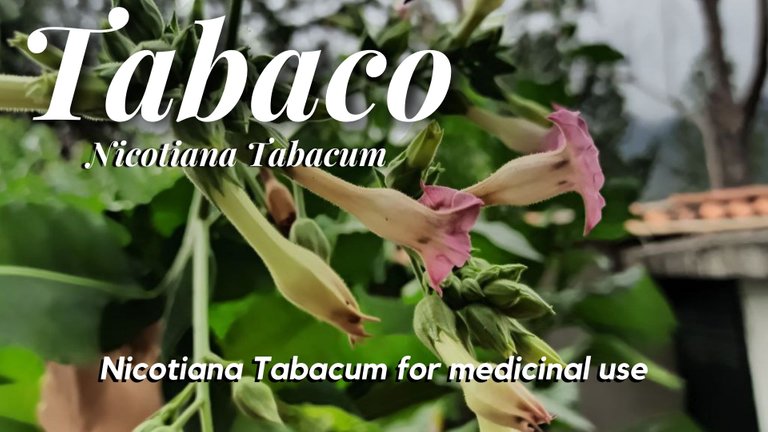
Being here in my hometown I dedicate myself to activities that in caracas I normally can not carry out, one of these tasks is to make "Rapé" that medicinal powder that I told you some time ago that I made. Today I bring you a little of what is the previous harvesting process before being able to work with the tobacco leaves already cured.
Tabaco
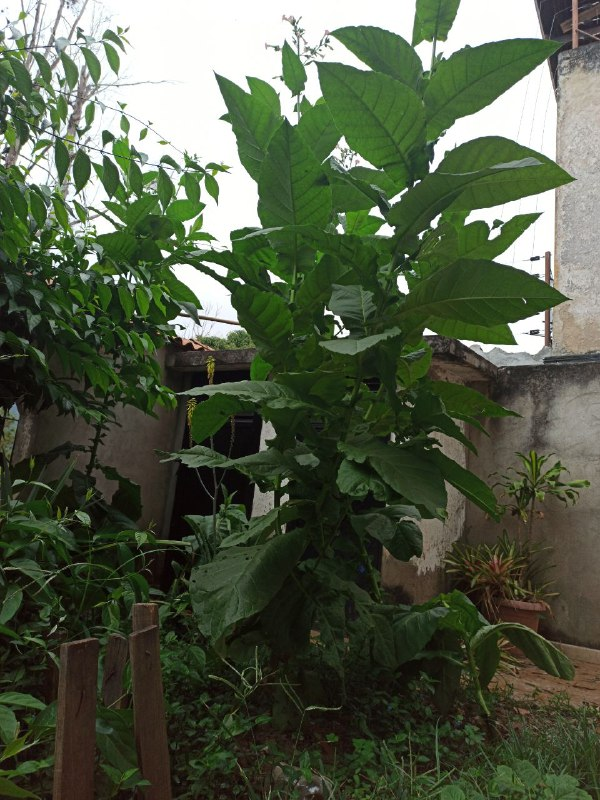
Tobacco is a multifunctional plant that grows in South America (Nicotiana tabacum), its medicinal and therapeutic use is ancestral knowledge, our ancestors used it for protection and connection as well as for sprains or other respiratory diseases that we suffer regularly (ironic isn't it?). It is known for the use that has been given by the harmful consumption of cigarettes, but very little people know of the benefits it has in its natural form.
My maternal grandmother was the first person to introduce me to the medicinal use of tobacco, she filled a bottle with whole tobacco leaves and then emptied a bottle of absolute alcohol into them, after 3 months of that bottle being stored away from sunlight, what resulted was a topical ointment that was useful for varicose veins, muscle aches, mosquito repellent, stomach pains, among others.
When I arrived in the jungle I discovered some of its other uses, for them it is a welcome greeting to share tobacco, it helps them during ceremonies to protect and unify the energies of those present, and it is also a tool for the shaman, and for these reasons I am very grateful when I have a small tobacco plant nearby.
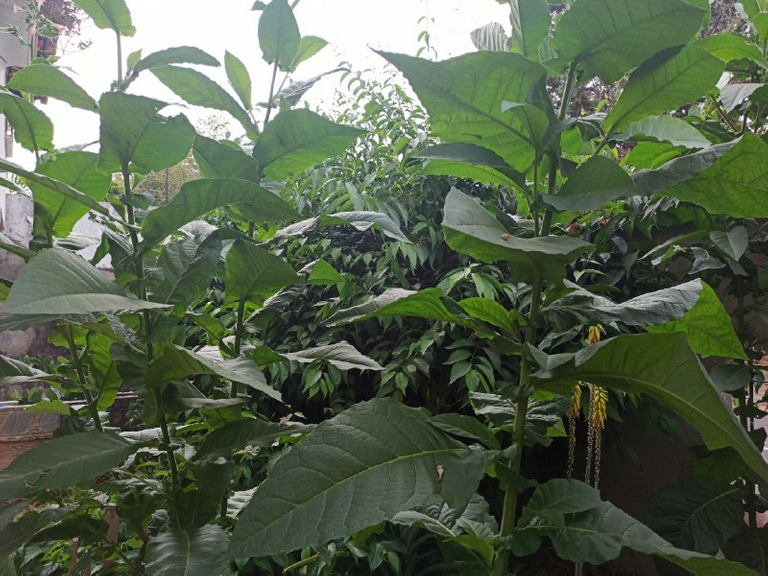
This little plant was planted at the beginning of the year at a friend's house with whom I was working at that time, in that place the soil is incredibly fertile so the development of the plant was quite fast, it took more or less 3 months for its flowers to sprout and when it was ready we decided to harvest it. It is always preferable to cut the leaves when the moon is full (full moon), because this is the moment when the sage is concentrated in the leaves and at the top of the stem.
The tobacco plant has a lot of resin in its stems and leaves, so it is always good to have gloves to remove them without hurting them, I also consider that it is a little uncomfortable the fact that they get stuck in your hands hehe, if that happens, with a little alcohol you can go little by little removing it.
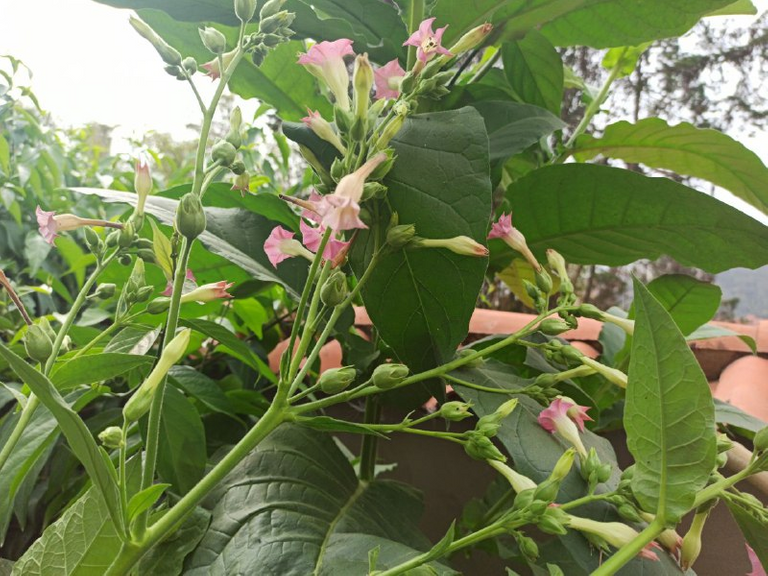
We start with the flowers, this is where the seeds are found, it is best to let them dry a little and remove them when they are already dark beige or brown. The wonderful thing is that just by spreading them on the ground, they grow back and the mature bushes can give you a huge amount of seeds.
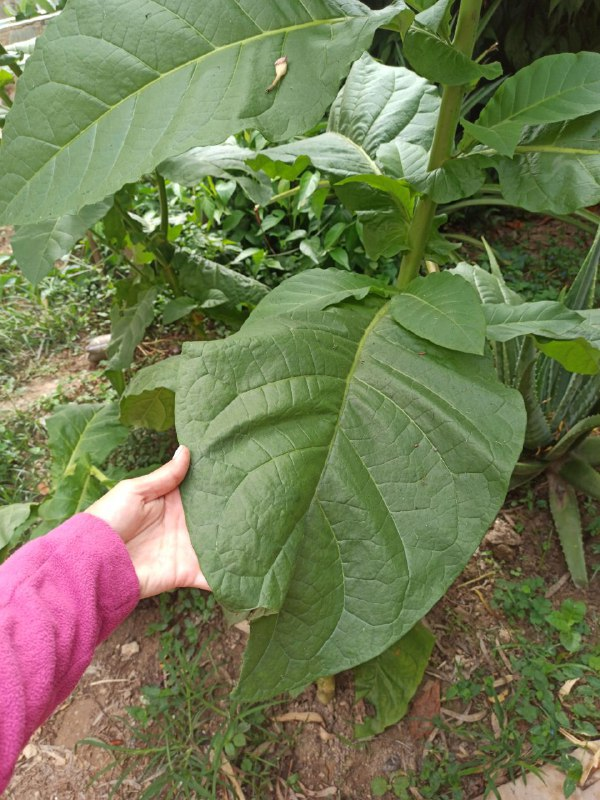
I had always thought that the bigger the leaf the better the harvest because it yielded more, but it turns out that in the case of tobacco, small leaves are synonymous with more concentration in its components, so we not only harvested the leaves that already needed a cut, but we also took advantage of harvesting some of the small ones to make the monkfish more concentrated.
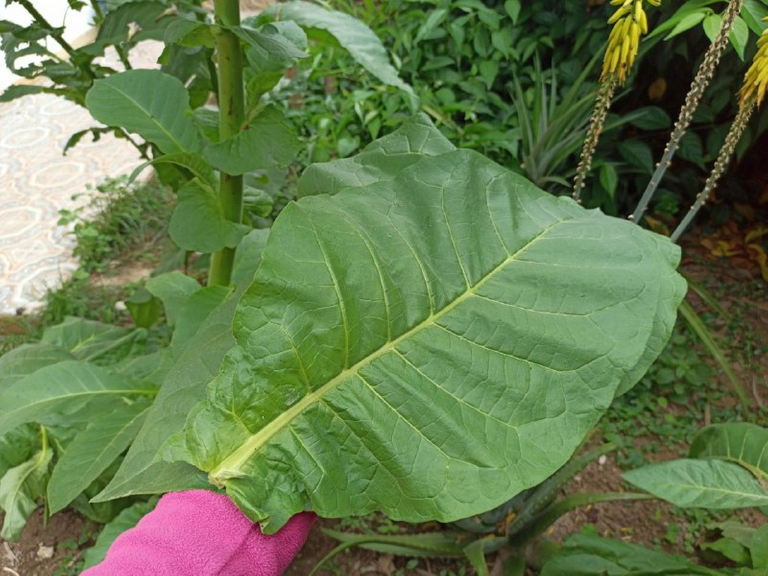
Although the leaves are the part of the plant that are intended for the therapeutic action of various diseases, their mode of use changes for each ailment.
Por ejemplo:
- for the treatment of chilblains, an infusion of small tobacco leaves is prepared, mixed with other branches such as guava or avocado leaves.
- In case of bronchitis, prepare a tea with this plant, along with those of balsam, chamomile, elderberry, rosemary and drink it in the morning and evening.
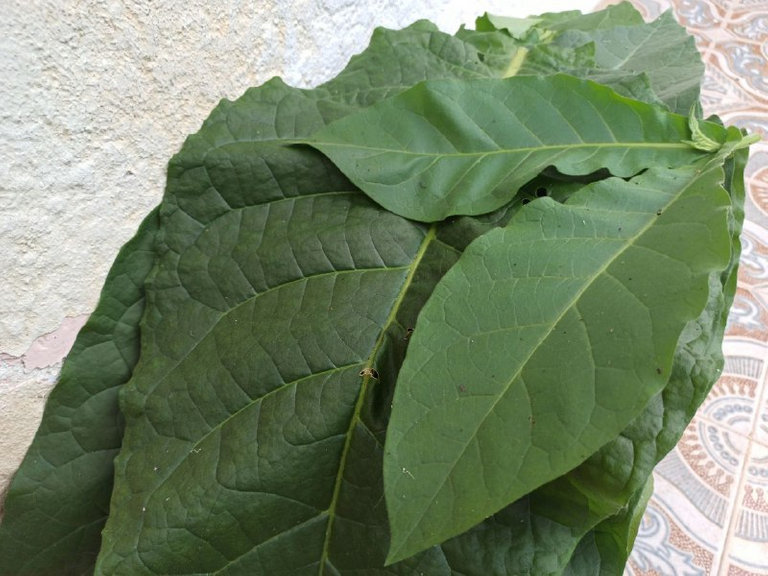
Once we pile up all the leaves that we decided to dry, the next step is to tie them in pairs or sets of four, if possible because of the different sizes, and then hang them in a ventilated and preferably dark place. The leaves are placed facing each other holding the main stems so that they do not break as they are quite fragile.
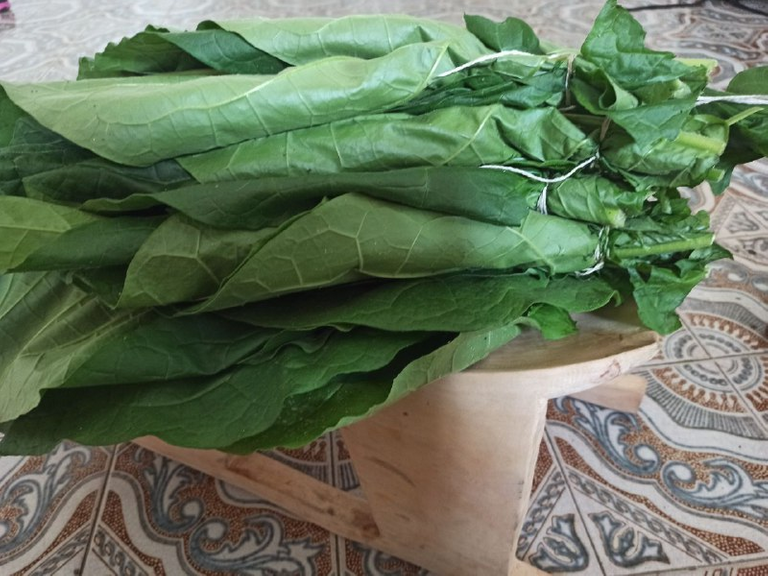
So once we had them ready we placed a rope hung from side to side on the wall and placed them side by side and now all that was left was to wait for them to dry and that takes about a month more.
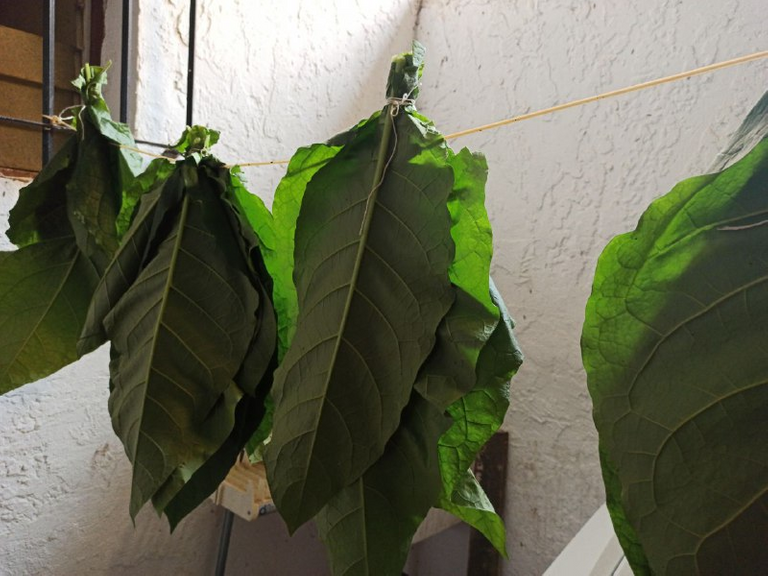
Every day I checked them to make sure that no little animals were sticking to them, and that the leaves that we put in sets of 3 or more were drying well. Some of them had to be moved to dry more, but the others continued to dry beautifully.
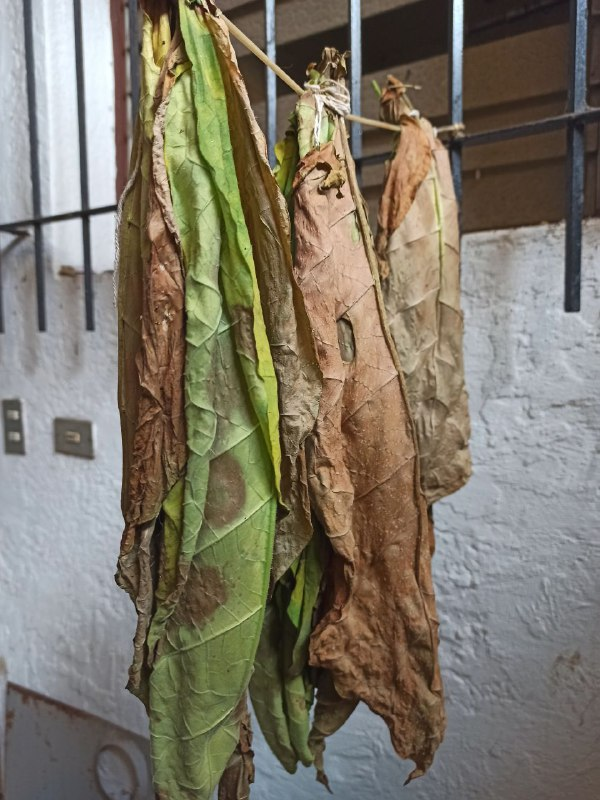
In total there were approximately 800 grams of dry tobacco. I think it is really a lot. With this amount I work at least 6 whole months making Rapé for myself and to give to friends. The subsequent cleaning of the leaves, grinding them to a very fine powder and all the processes involved in having this finished product take a lot of time and dedication because there are things that need more patience than others and the fact that it is something handmade undoubtedly makes every minute more valuable because it is our energy that is being stimulated and which directly influences the effect that this has on us.
Finally I want to note that I do not publish this to encourage people to consume any plant or product that they do not know, but I do it so that those interested in knowing more, can know my experience with them. If you have not tried the health effects that these things can have, it is best to simply ignore them, if you wish. We cannot differentiate between good and bad, when we have not given ourselves completely to the use of something and observed day by day its effects. At the same time, this should always be done accompanied by the knowledge of experts in the area.
That's all for today, I hope you have a wonderful week, it is a blessing for me to be able to thank the gift of life once again. Adiwa!

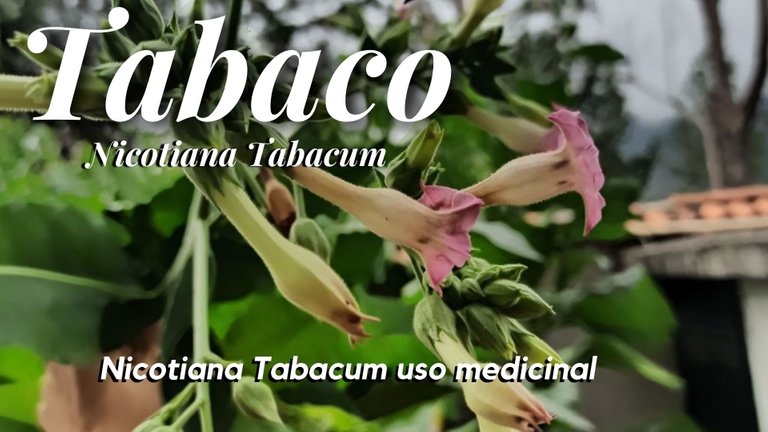
Estando aquí en mi pueblo me dedico a realizar actividades que en caracas normalmente no puedo llevar a acabo, una de esas tareas es la de hacer "Rapé" ese polvo medicinal que ya hace un tiempo les comente que hacia. Hoy les traigo un poco de lo que es el proceso de cosecha previo antes de poder trabar con las hojas de tabaco ya curadas.
Tabaco

El tabaco es una planta multifuncional que crece en america del sur (Nicotiana tabacum), su uso medicinal y terapéutico es conocimiento ancestral, nuestros ancestros lo usaban tanto como para protección y conexión como para torceduras u otras enfermedades respiratorias que padecemos con regularidad (¿irónico no?). Es conocido por el uso que se le ha dado mediante al consumo perjudicial de cigarrillos, pero muy poco saben las personas de las bondades que este tiene en su forma natural.
Mi abuela materna fue la primera persona en introducirme en el uso medicinal del tabaco, ella llenaba una botella con hojas de tabaco enteras y luego les vaciaba un frasco de alcohol absoluto, al cabo de 3 meses de que esa botella estuviese guardada lejos de la luz del sol, lo que resultaba era un ungüento tópico que le servía para las varices, dolores musculares, repelente de mosquitos, para dolores estomacales, entre otros.
Al llegar a la selva descubrí algunos otros de sus usos, para ellos se trata de un saludo de bienvenida el hecho de compartir el tabaco, los ayuda durante las ceremonias a proteger y unificar las energías de los presentes, así como también es una herramienta para el chaman, y por estas razones agradezco mucho cuando tengo una plantita de tabaco cerca.

Esta plantita las sembramos a comienzo de año en casa de un amigo con el que estaba trabajando para ese tiempo, en ese lugar la tierra es increíblemente fértil por lo que el desarrollo de la planta fue bastante rápido, tardo mas o menos 3 meses para que sus flores retoñaran y cuando estuvo lista nos decidimos a cosecharla. Lo preferible siempre es cortar las hojas cuando la luna esta llena (plenilunio), esto porque es el momento donde la salvia se encuentra concentrada en las hojas y en lo mas alto del tallo.
Las planta del tabaco tiene muchísima resina en sus tallos y hojas, por lo que es bueno siempre tener unos guantes para retirarlas sin lastimarlas, también considero que es un poco incomodo el hecho de que se te queden pegadas en las manos jeje, si eso llega a suceder, con un poco de alcohol puedes ir popo a poco retirándolo.

Comenzamos con las flores, aquí es donde se encuentran las semillas, lo mejor es dejar que se sequen un poco y retirarlas cuando ya estén de un tono beige oscuro o marrón. Lo maravilloso es que solo esparciéndolas en la tierra, ellas vuelven a crecer y las matas ya maduras te pueden dar una cantidad enorme de semillas.

Siempre había pensado que mientras mas grande la hoja mejor era la cosecha porque rendía mas, pero resulta que en el caso del tabaco, las hojas pequeñas son sinónimo de mas concentración en sus componentes, por lo que no solo cosechamos las hojas que ya necesitaban un corte, si no que también aprovechamos de cosechar algunas de las pequeñitas para hacer que ese rape quedara bastante concentrado.

Aunque las hojas son la parte de la planta que se destinan a la acción terapéutica de varias enfermedades, su modo de empleo cambia para cada padecimiento.
Por ejemplo:
- para el tratamiento de sabañones se prepara una infusión de hojas pequeñas de tabaco, mezclando con otras ramas como lo son las hojas de guayaba o de aguacate.
- En caso de bronquitis, se prepara un té con esta planta, junto a las de bálsamo, manzanilla, saúco, romero y se bebe en la mañana y en la noche.

Una vez que amontonamos todas las hojas que decidimos secar, el siguiente paso es amarrarlas en pares o juegos de cuatro, siempre y cuando se pueda por los diferentes tamaños, para luego guindarlas en un lugar ventilado y de preferencia obscuro. Las hojas se ponen frente a frente sujetando los tallos principales para que no se rompan ya que son bastante frágiles.

Así una vez que las tuvimos listas colocamos una cuerda guindada de lado a lado en la pared y las acomodamos una al lado de la otra y ya solo lo que quedaba era esperar a que estuviesen secas y eso tarda aproximadamente un mes más.

Todos los días las revisaba de que no se les pegaran animalitos, y de que las hojas que pusimos en conjuntos de 3 o más, estuviesen secándose bien. Algunas tuvimos que cambiarlas de lugar para que secaran mas, pero las otras siguieron secándose maravillosamente.

En total fueron aproximadamente 800 gramos de tabaco seco. Creo que es muchísimo la verdad. Con esta cantidad trabajo al menos 6 meses enteros haciendo Rapé para mi y para regalar a amigos. La limpieza posterior de las hojas, el molerlas para que quede un polvo muy fino y todos los procesos que implican tener este producto acabado llevan mucho tiempo y dedicación pues hay cosas que necesitan mas paciencia que otras y el hecho de que sea algo artesanal pues sin dudas hace cada minuto mas valioso ya que es nuestra energía la que se esta estimulando y la que influye directamente en el efecto que esto tiene sobre nosotros.
Para finalizar quiero acotar que no publico esto para incitar a las personas a consumir ninguna planta o producto que desconozcan, pero si lo hago para que aquellas personas interesadas en saber más, puedan conocer mi experiencia con ellas. Si no has probado de los efectos sobre la salud que estas cosas pueden tener, lo mejor es simplemente ignorarlo, si así se desea. No podemos diferenciar entre lo bueno y lo malo, cuando no nos hemos entregado por completo al uso de algo y observado día a día sus efectos. A su vez esto siempre debe hacerse acompañado por el conocimiento de expertos en el area.
Esto ha sido todo por hoy, espero tengan una maravillosa semana, es para mi una bendición poder agradecer el regalo de la vida una vez mas. Adiwa!

What a healthy tobacco plant you have! I used to live in Kentucky, and my family grew tobacco, but for cigarettes. I remember working in it, and getting all sticky from the resin the plant produces. I recall hearing some medical benefits, but I do not remember. If I do, ill come back to comment here.
What a cool experience. Please let me know if you get to know I'm still around learning 🙏😅
!ENGAGE 25
You need to own more token
Absolutely love this post - I had no idea it could be used in tea for those things! It's illegal to grow here in Australia, but a friend has a backyard plant - I'll send your blog to him as I think he'll love it. He gave me some seeds but I didn't plant them, but now I've read this, I'm super keen! Thanks for your infinite grandmother wisdoms! Love, @riverflows
You've been curated by @theherbalhive on behalf of The Herbal Hive.We support any content related to herbalism, from stories about your relationship with medicinal plants, to wildcrafting, foraging, ethnobotany, plant spirituality & herbs as nourishment, as well as the use of natural products to create medicines such as salves and tinctures. Use the tag #theherbalhive or post from our community!
Community II Delegate II Curation TrailII Discord
Wow, I think it's awesome to learn that it's illegal over there, I had no idea, hehe, I guess it's a blessing to be able to grow these little plants over here then. Good thing you can get your hands on some. I think you might like the macerate that is made with absolute alcohol because it is a real miracle to rub on the skin hehehehe.
Thanks you so much @riverflows ❤️🙏
!ENGAGE 25
You need to own more token
I am absolutely going to do this! I didn't even recognise it - he took me to it and said: 'can you guess what this is?' and I had no idea! It's great to read your first hand knowledge, Irene!